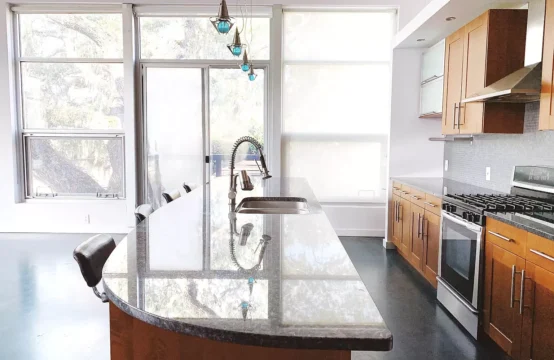
In the ever-changing world of real estate, maximizing home value has become an art. Homeowners and investors now focus on intricate details, and one crucial factor gaining prominence is square footage. From open-concept living to multipurpose rooms, smart storage solutions, and outdoor spaces, homeowners are unlocking every inch’s potential to enhance functionality and resale value.
Open Concept Living: Breaking Down Walls for a Bigger Feel
Compartmentalized living spaces are giving way to open-concept designs. Knocking down walls enhances the perceived size, allows more natural light, and maximizes usable square footage, catering to modern aesthetics.
Multipurpose Rooms: Flexibility in Functionality
Today’s homeowners prefer multipurpose rooms that adapt to various needs. Rooms doubling as a home office or guest bedroom exemplify the versatility that appeals to diverse potential buyers.
Smart Storage Solutions: Decluttering for Value
Efficient storage solutions, from under-stair storage to built-in cabinets, enhance the aesthetic appeal and create a sense of order, a significant selling point for prospective buyers.
Outdoor Living Spaces: Extending Square Footage Beyond Walls
Outdoor areas like patios and decks are recognized as extensions of a home’s square footage, providing additional spaces for relaxation and entertainment.
Energy-Efficient Upgrades: Sustainability Meets Savings
Investing in energy-efficient upgrades not only contributes to a greener footprint but also adds value to a home, appealing to eco-conscious homebuyers.
The 12.0% increase in the median sale price per square foot has significant implications for both home valuation and sales strategies. This trend shapes the real estate landscape.
Impact on Home Valuation:
- Increased Property Values: Homes are appraised at higher rates based on square footage, influencing overall property worth.
- Renewed Focus on Square Footage: Homebuyers and sellers emphasize square footage as a key factor in determining property value.
- Renovation ROI Considerations: Renovations focusing on increased usable square footage yield higher returns.
Impact on Sales Strategies:
- Marketing Emphasis on Square Footage: Real estate listings highlight square footage as a selling point.
- Strategic Pricing Adjustments: Sellers adjust pricing strategies based on increased median sale price per square foot.
- Educating Buyers on Value: Real estate agents educate buyers on the correlation between square footage and property values.
- Highlighting Functional Spaces: Sellers strategically showcase the functionality of each square foot.
Adaptation of Floor Plans:
- Builders adapt floor plans to align with the demand for increased square footage, incorporating open-concept layouts and flexible living spaces.
- Negotiation Strategies: Both buyers and sellers adjust negotiation strategies based on the increased focus on square footage.
The 12.0% increase in the median sale price per square foot shifts how homes are valued and marketed. This trend encourages a nuanced approach to homebuying and selling, with heightened awareness of square footage’s impact on property value. Staying attuned to these changes is crucial for successful transactions.
In the dynamic realm of real estate, the square foot has become a guiding principle for maximizing property value. Staying attuned to trends, such as open-concept living and multipurpose rooms, is key to unlocking your home’s full potential. Collaborating with an expert real estate agent enhances understanding of how the increase in median sale price per square foot impacts overall home value in the current market.





